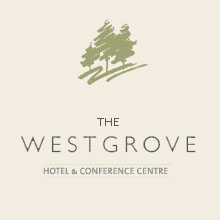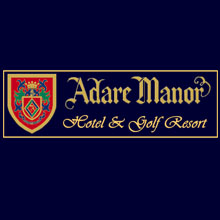Hotel Design Trends 2012
Hotel Design Trends 2012
| Written by Jackie Sloat-Spencer |
| Tapping into 10 design trends that give hotels flair
Always innovating and constantly changing, this year’s design trends motivate the newest and hottest hotel styles popping up in the Canadian marketplace. Hotelier magazine surveyed the country’s leadingdesign teams to come up with our list of 10 trends influencing hotel design to help you in your fit-outs, or planned Hotel refurbishment. (in no particular order). The distinguished panel includes Mavis Truscott, hospitality design lead at Calgary-based Sizeland Evans Interior Design; George Yabu and Glenn Pushelberg, partners at Yabu Pushelberg, Toronto; Robynne Moncur, principal designer at Moncur Design in Toronto and Julie Campbell, principal, SSDG Interiors Inc., Vancouver.
1. Living, Breathing Lobbies: Gone are the days of lifeless lobbies, stagnant vestibule areas ignored by guests headed to their rooms. Hoteliers now believe these areas are perfect for showcasing the style and mood of a hotel. As such, they’re equipping lobbies with innovative kiosks and creative check-in areas, and, in the process, creating a fun, social atmosphere with pizzazz. The common spaces now serve as an oasis where guests can sit and relax. A central café lounge with multimedia stations are the norm. “Lobbies abound with opportunity — give your guests the opportunity to use them for casual meetings, socializing and as a gathering space,” says Julie Campbell of Vancouver-based SSDG Interiors Inc. For example, the Sheraton Gateway Hotel at Pearson International Airport recently underwent a $3-million renovation with an upgraded lobby that comes alive. The hotel’s Link@Sheraton lounge comes fully equipped with Internet connectivity where guests can check email and print their boarding passes. Additionally, The Hotel at River Rock in Richmond, B.C., features a living lobby that is four-storeys high. Guests can chill out in the open-air space while enjoying the soothing sound of a waterfall and indoor pond.
2. Spa-Like Bathrooms: Designing a bathroom space with spa-like elements is a great way to ensure guests have a relaxing stay. A slow down and chill-out design invites guests to spend luxurious hours ensconced in their suites. Old showers are out, body jet and rain showers are in, with oversized bathtubs oozing luxury. And, these days, top-of-the-line textiles are the norm with terrycloth robes, towels sporting high-thread counts and luxurious beauty items available in the bathroom. At the W Montreal hotel, a Starwood property, designers carefully crafted a stylish environment by placing a large, free-standing tub in the middle of the suite surrounded by glass shower doors. Spa-like bathroom amenities complete the look. The St. Regis San Francisco also offers an oversized tub with marble vanity complete with two glass sinks, a ceiling-mounted rainfall showerhead and detachable handheld shower.
3. The Comforts of Home: It’s no secret today’s guests want to be reminded of home so designers are using warm, rich colours to offer comfort in each suite. Soft orange hues promote relaxation, while modern greys create an understated cool elegance. “Spiced pumpkin, tangerine and amber” are popular variations of the orange palette, explains Robynne Moncur of Toronto’s Moncur Design. At Hôtel Sofitel Montreal Golden Mile, guestrooms incorporate wood accents on the bed, topped with soft orange sheets. Designers also incorporated natural colours to give guests a sense of the outdoors. The Fairmont Banff Springs’ Gold Wing delivers a warm gold palette without being overbearing. Accents of warm autumnal fabrics, a thistle motif and indigenous tyndall stone are added to reflect the heritage and geography of the hotel. The Barrie, Ont.-based Horseshoe Resort uses natural colours such as amber and wood textures to create an outdoor feeling while retaining its contemporary feel. This trend comes as “Slow travel and staycations continue to gain momentum,” says Julie Campbell of SSDG Interiors Inc.
4. Lifestyle Coach:With today’s fast-paced environment, it’s important guests keep up with their daily routines even when on the road. Borrowing a residential look and feel, hotels aim to replicate a guest’s home life by including flat-screen TVs, upgraded exercise areas and a bevy of tech toys. Hotels now also feature scent branding, with the interior scents of guestrooms and lobbies carefully chosen to represent the hotel and remind guests of home. Shangri-a Hotels and Resorts uses a ginger and bergamot-scent in its rooms. Providing a tech-friendly environment is a must. These days iPod docking stations and top-of-the-line speaker systems are included in guestrooms. “IPod docking stations with integrated speakers bring an element of home,” since guests can play their own music, explains Mavis Truscott of Calgary’s Sizeland Evans Interior Design. In addition to the most up-to-date fitness studios, Pilates and Yoga classes have been added to appeal to the fitness-savvy traveller. Toronto’s Hazelton Hotel offers a mosaic-tiled lap pool and a team of personal trainers for those who want to stay fit while on the road.
5. Restaurants that Sizzle: Hotel restaurants are more than just a place to stop and grab a bite. The culinary havens are the perfect outlets to showcase innovative design, making the restaurant itself a destination. Stock restaurant, sitting atop the 31st floor of the new Trump International Hotel and Tower Toronto, impresses with an art-deco vibe and contemporary look. Its crystal-studded wall appliques, antique mirror ceiling panels, soft bronze metal work and blend of colours from a champagne-and-caviar palette, make the resto a key destination. Other hotel restaurants, such as Toca by Tom Brodi at the Ritz-Carlton, attract visual interest by showcasing elements such as a glass cheese cave. Centrally located in the main dining room, it displays more than 200 international cheeses. Other highlights include the restaurant’s walk-through pastry corridor, a glazed-brick interior and its open-concept kitchen — perfect for watching the chefs in action.
6. Wall Candy: Showcasing local art can impart a personal touch and help define a hotel brand while promoting local talent. Large-scale artwork can be sourced from local photographers and is ideal for adding a signature flair to each room. A gallery of artwork can be used as a pathway to lead guests to their suites, imparting a sense of arrival. The Aloft Montreal Airport hotel features a rotating display of artwork by local designers. Last year, Vancouver’s Moda Hotel underwent a massive artistic transformation of its exterior, reflecting its energy and style through the use of street-art. A display, called “Unintended Calculations,” was created by a team of local artists, including Scott Sueme. “Colour, art and fabrics transform spaces to engage the senses and deliver the mood and hotel story,” adds Mavis Truscott of Calgary’s Sizeland Evans Interior design.
7. Unconventional Layouts: Rethinking guestroom configurations, hoteliers are looking for new ways to break from the basic bed-desk-bathroom layout. Floating desks are now de rigueur, giving the room a more residential feeling. And, with more guests working from personal devices, some hotels are also eliminating desks. Instead, coffee tables are bigger and higher, so guests can eat and work at the same time, reports Yabu Pushelberg. Once a guestroom fixture, credenzas are now history, replaced by mounted flat-screen TVs. And carpets are being replaced by materials such as hardwood, herringbone and even bamboo floors. Matching furniture has given way to mix-and-match pieces, which add an eclectic flair to the room. Upholstered furniture brings an air of sophistication, and surprising textures are created with rich velvets, silks and chintz covered with interesting patterns and providing bold contrast. Montreal’s Alt Quartier DIX30 makes a bold statement by incorporating interesting blends of red and pink into a dark colour palette and showcasing a Calla chair, an ergonomic accessory that transforms into a chaise lounge.
8. Indoor Meets Outdoor: Hoteliers are venturing outside the norm to create visual extensions of the outdoors inside its doors. Water is being incorporated into traditional design, bringing a sense of outdoor spa-like quality to the hotel. Wood flooring in bathrooms is an excellent way to create an “outdoorsy” space inside, while stone floors featuring area rugs for warmth, create a rustic, resort-like feeling. Wood panelling adorns the walls with marble and slate to infuse modern and elegant twists. Designers are also bringing the outdoors in by using water features, large plants and birch accessories, says Robynne Moncur of Toronto’s Moncur Design. The Aloft Montreal Airport goes the extra mile in its outdoor patio design with a bold colour scheme of bright green and brown, complete with various types of lounging blocks substituted for chairs. The Hilton Whistler Resort and Spa offers a wood-burning fireplace in many of its suites, or guests can step outside to discover the communal fireplace with sitting rocks or comfy loungers.
9. Plugged In: Guests have come to expect a technology- friendly guestroom with clever lighting design and the newest innovations in lobbies. Hotels are looking for ways to streamline the check-in experience while appealing to customers’ craving for technology. The Toronto Marriott Downtown Eaton Centre Hotel offers guests an independent check-in area with self-serve kiosks. There, guests can print boarding passes while checking in. And, the Hyatt Andaz brand has replaced the check-in desk with PC tablets allowing guests to sign in at their leisure. Once inside the room, the lighting sets the mood. High-intensity lighting is the norm, framing bathroom mirrors or emitting a softer glow and a funkier feel from under a lamp shade. Ambient lighting is now expected and guests want to control more, leading hotels to install lighting with touch-pad dimmer switches so guests can create their own customized experience.
10. It may not be easy to go green but hoteliers are getting creative in using existing elements and making them energy efficient and eco-friendly. The Quartier DIX30 in Montreal capitalizes on natural light with its oversized windows, creating a low-energy environment. Electronic water faucets are installed in bathrooms, saving energy and money without compromising style. The Element Vaughan Southwest, slated to open in Vaughan, Ont., in 2013, promotes an eco-conscious stay fused with urban design. And, in an effort to eliminate wasteful bottles, bath amenities will be available in a dispenser format. Guestrooms will include recycling bins for paper, plastic and glass, as well as carpeting made from recycled materials. Extra high ceilings, a 16-foot wall of windows, low seating and an open layout in the lobby will allow natural light to carry throughout the space Written by Jackie Sloat-Spencer |































